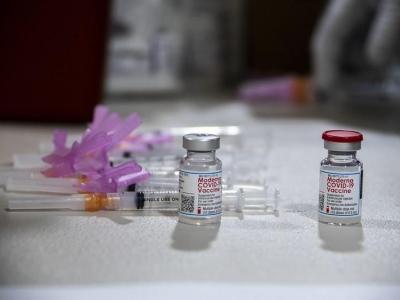Nov 16, 2012 (CIDRAP News) – European health officials are seeing a continued rise in multiple antibiotic resistance in Klebsiella pneumoniae and Escherichia coli, a pattern they say is likely fueled by misuse of the drugs, according to new data.
The European Centre for Disease Prevention and Control (ECDC) released the information today to coincide with antibiotic resistance public awareness programs that are taking place in the EU, as well as in countries such as Australia, Canada, and the United States.
The European Antibiotic Awareness Day is Nov 18, but officials marked the event today with presentations in Brussels that also outlined the greatest challenges.
In a press release on its latest findings, the ECDC said that over the past 4 years about a third of EU countries have seen a significant rise in combined resistance to multiple antibiotics in K pneumoniae and E coli. Several member states are reporting that from 25% to more than 60% of K pneumoniae from bloodstream infections are showing resistance to multiple antibiotics.
The agency warned that patients sickened by multidrug-resistant bacteria face limited options for treatment, including only a few last-line antibiotics.
Other data showed that consumption of carbapenems, one of the last-line antibiotic classes, increased significantly in EU countries from 2007 to 2010, likely as a result of the rising numbers of multidrug infections, according to the ECDC. Patterns vary widely in the EU, with a 3.5-fold difference between Estonia, which has the lowest antibiotic consumption, and Greece, which has the highest.
At a press conference in Brussels, ECDC Director Marc Sprenger, MD, PhD, said one piece of good news is that methicillin-resistant Staphylococcus aureus infections have decreased or stabilized in most EU countries. "Nevertheless, we must remain vigilant, as the percentage of Staphylococcus aureus resistant to methicillin remains above 25% in more than one fourth of the reporting countries, mainly in Southern and Eastern Europe," he added.
Sprenger said the European Commission launched a multifaceted action plan last year, and that it's crucial for countries to combine their efforts to battle the antibiotic resistance threat.
As part of antibiotic resistance awareness activities in the United States this week, the Washington, DC–based nonprofit group Center for Disease Dynamics, Economics and Policy also found wide geographic differences in antibiotic usage among different states.
See also:
Nov 16 ECDC press release
Nov ECDC antibiotic consumption summary
Nov 13 CIDRAP News story "Good news, bad news on US antibiotic use and resistance"






















